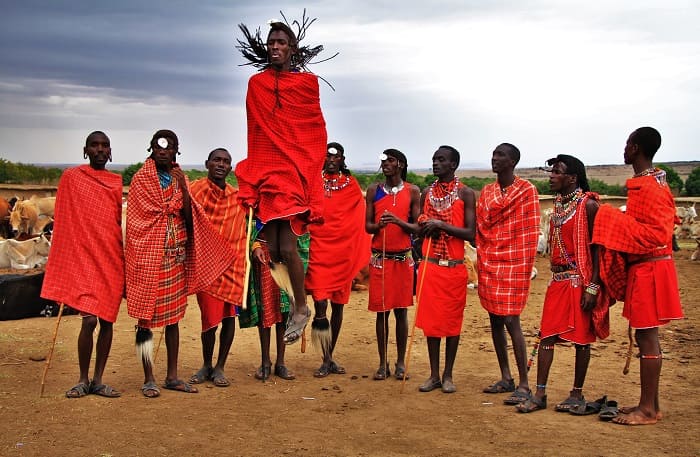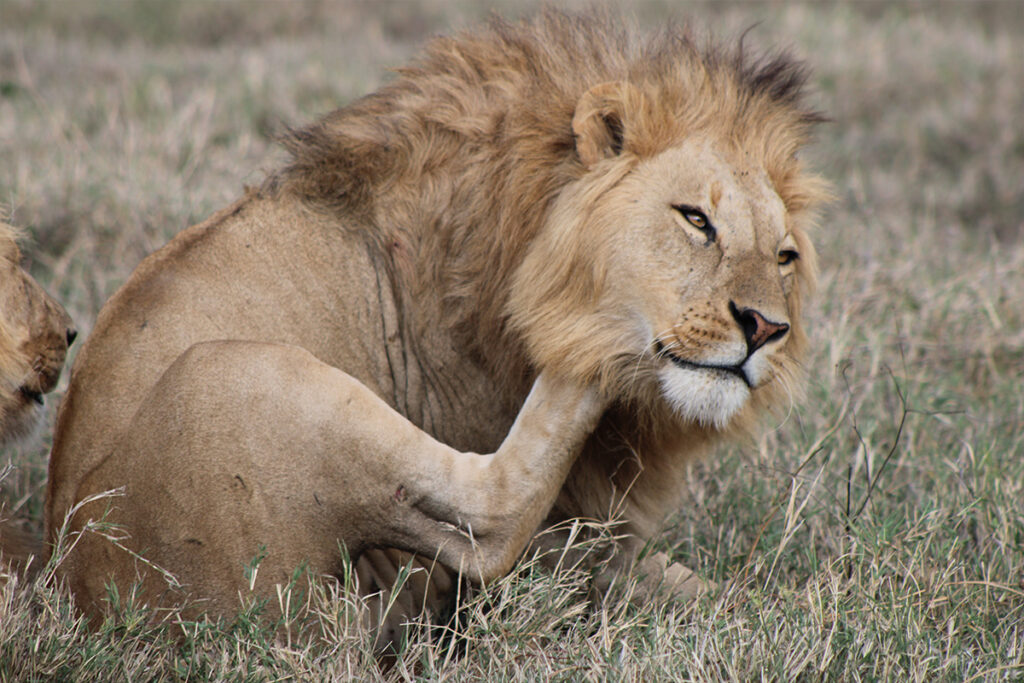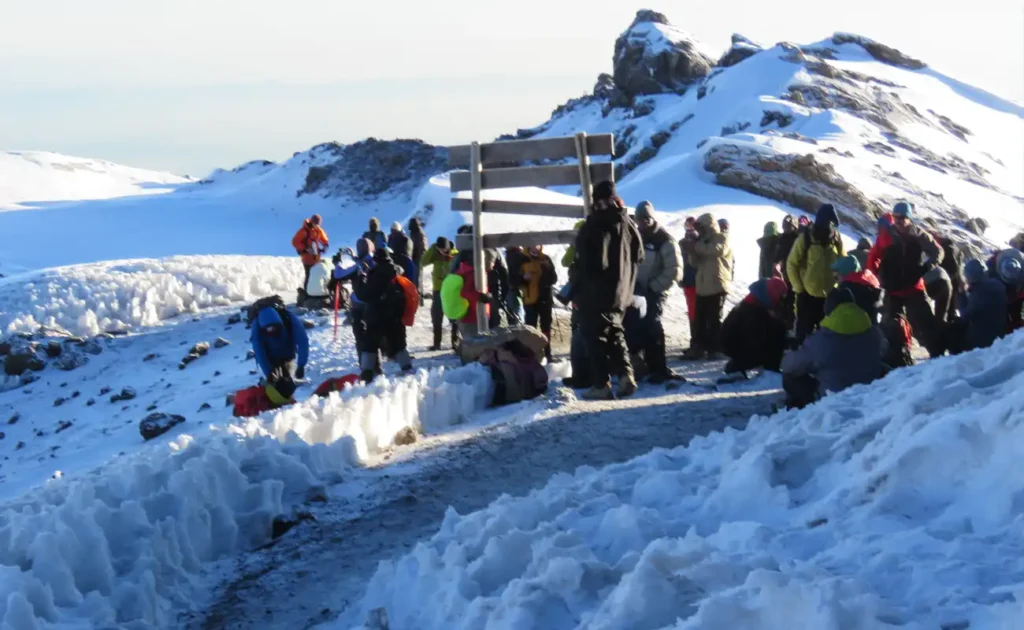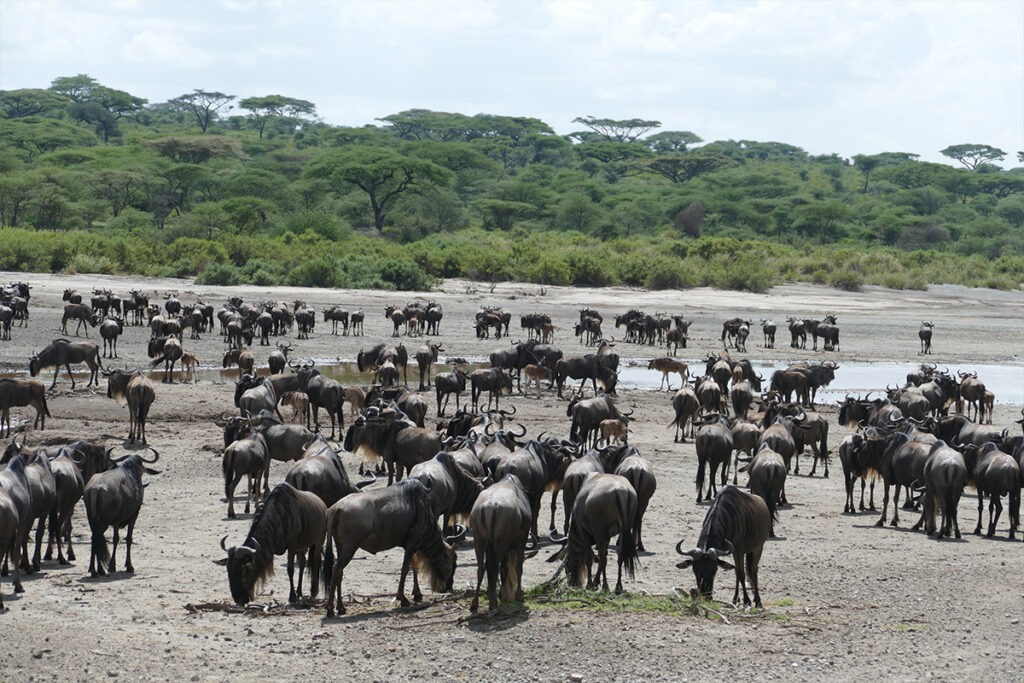Ever wondered how a culture thrives for centuries in tandem with nature? The Maasai of Tanzania have managed this remarkable feat, seamlessly blending traditional values with modern challenges. Touring a Maasai village offers a unique window into their resilient lifestyle, rituals, and deep ecological knowledge.
Dating back over 1000 years, the Maasai’s semi-nomadic lifestyle showcases sustainable practices that modern societies are keen to learn. Visitors on these tours often find themselves captivated by their unique rites of passage and the vibrant crafts they produce. Statistics show an increasing interest with annual growth rates in tourism to these villages, emphasizing the Maasai’s global cultural impact and the fresh perspectives they offer on sustainable living.

Maasai village tour Tanzania: A cultural voyage
Venturing into a Maasai village is like stepping into a living museum. The Maasai people, known for their distinctive red shukas (robes), welcome visitors warmly while sharing their ancient customs. This cultural voyage offers a chance to witness daily routines such as cattle herding and fire-making. The Maasai’s deep connection to their land and livestock is evident in every aspect of their lifestyle. As mentioned in this article, such experiences provide an authentic glimpse into their enduring traditions.
One of the tour highlights is the traditional dance performance. The Maasai warriors perform the adumu, also known as the “jumping dance”, which is a test of strength and agility. Visitors can also participate in crafting sessions, creating beaded jewelry alongside Maasai women. This hands-on activity fosters a deeper appreciation for their artistic skills. Interaction with the community offers valuable insights into their social structure and customs.
Maasai village tours are not only about observing traditions but also learning sustainable practices. The Maasai have long mastered techniques for living harmoniously with nature, which can inspire sustainable living practices among visitors. Activities like eco-friendly cattle farming and medicinal plant usage show how the Maasai utilize their natural resources wisely. According to this post, there is a growing interest in eco-tourism within these communities. These sustainable models could potentially be replicated in other regions facing similar environmental challenges.
Besides cultural immersion, the tours also provide economic benefits to the Maasai. Tourism serves as a vital source of income, funding essential services such as schools and health clinics within the villages. By purchasing handmade crafts and donating to community projects, visitors contribute to the welfare of the Maasai people. Supporting this responsible tourism model fosters development while preserving an age-old culture. Thus, a Maasai village tour is not just a trip but a journey that supports cultural preservation and sustainable development.
Insights into the Maasai way of life
The Maasai way of life is a remarkable blend of tradition and adaptability. Centered around livestock, particularly cattle, their livelihood and social status are deeply woven into these animals. Cattle are not just economic assets but also integral to rituals and relationships. Families measure wealth by the number of cattle owned, reflecting their vital role. Moreover, cows are used in dowries, underscoring their cultural significance.
The Maasai diet primarily consists of meat, milk, and occasionally blood from their cattle. Their food practices are closely tied to their semi-nomadic lifestyle, moving with their herds in search of fresh pastures and water. Milking cows and fetching water are daily tasks that establish a rhythm in their routines. The community structure is highly cooperative, with families often assisting each other. This close-knit living fosters strong community bonds and mutual support.
Daily life in a Maasai village includes vibrant ceremonies and rituals. Key events like circumcisions, marriage, and coming-of-age ceremonies are celebrated with elaborate dances and feasts. Traditional attire, featuring beaded jewelry and colorful shukas, adorns participants, symbolizing their culture. Such events are opportunities for storytelling, passing wisdom from elders to younger generations. These rituals strengthen their cultural identity and continuity.
The Maasai’s connection to nature is profound and instructive. They use natural remedies derived from local plants for healing, demonstrating their deep environmental knowledge. Their dwellings, called manyattas, are crafted from organic materials like mud, sticks, and cow dung. This eco-friendly construction reflects sustainability in practice. Furthermore, the Maasai practice rotational grazing, which helps maintain soil fertility and prevent overgrazing, showcasing their environmental stewardship.
The unique traditions and rituals of the Maasai
Maasai traditions are rich in cultural heritage and vibrant symbolism. Their rituals start from a young age, with important life milestones marked by elaborate ceremonies. Initiation rites, like enkipaata, prepare young boys for warrior status. During these rituals, elder guidance and advice are crucial. These practices not only instill social values but also preserve tribal customs across generations.
A key Maasai ceremony is the Eunoto, where young men graduate from warriors to elders. This significant event includes traditional dances, chants, and even bull sacrifices. The gathering of various villages for Eunoto fosters unity and shared identity. Participants wear specific clothing and carry ceremonial items to signify their roles. This event strengthens community bonds while honoring cultural leadership transitions.
Marriage is another pivotal event within Maasai culture. Unions are celebrated with great enthusiasm, and several communities come together for the occasion. Bridewealth negotiations include livestock, underscoring the importance of cattle in their society. Gift exchanges and feasting accompany the ceremonies, creating a festive atmosphere. These marriages build alliances between families, fortifying societal ties.
The Maasai also observe rituals linked to nature and the seasons. For instance, they perform rainmaking ceremonies, appealing to divine forces for rain in arid times. This is evidence of their deep-rooted connection to the environment and their reliance on natural cycles. Elders and spiritual leaders often lead these ceremonies, blending spirituality with traditional knowledge. Their ecological wisdom is a testament to their sustainable living practices.
Sustainable living: Lessons from the Maasai village
The Maasai community exemplifies sustainable living practices that many modern societies can learn from. They utilize rotational grazing to prevent overgrazing, allowing vegetation to recover and soil to stay fertile. This technique ensures that their cattle have a constant supply of fresh grass. Their semi-nomadic lifestyle supports this approach, as they move in search of greener pastures. By managing the land responsibly, they maintain ecological balance.
Water conservation is another key aspect of Maasai life. They rely on seasonal rainwater and have developed efficient ways to harvest and store it. Traditional water pans and small dams are built to collect rainwater, providing a critical resource during dry periods. They also use natural filters to ensure clean drinking water. This careful management allows them to thrive even in arid conditions.
The Maasai’s housing, or manyattas, are built using sustainable materials. Constructed from wood, mud, and cow dung, these homes are both eco-friendly and practical. The materials are locally sourced, reducing environmental impact and transportation costs. Manyattas are also designed to be easily repairable and adaptable to different weather conditions. This method of construction showcases resourcefulness and a deep understanding of their environment.
The Maasai diet further reflects their sustainable lifestyle. By primarily consuming what they produce – meat, milk, and blood from their cattle – they minimize their ecological footprint. These food sources are renewable and naturally replenished. Additionally, they collect wild honey and forage for edible plants, diversifying their diet without exploiting any single resource. Their dietary habits demonstrate an equilibrium with nature.
The community’s traditional herbal medicine supports sustainable health practices. Maasai healers use plants and herbs from the forest to treat various ailments, avoiding commercial pharmaceuticals. This reliance on natural remedies reduces the need for manufactured drugs, which often have a larger environmental impact. Their knowledge of herbal medicine is passed down through generations, preserving this valuable aspect of their culture.
Lastly, the Maasai’s communal way of living emphasizes sharing and cooperation. Resources like food, water, and even labor are shared among families, ensuring that everyone’s needs are met. This collaborative approach not only fosters social cohesion but also reduces waste. By working together, the Maasai demonstrate that sustainable living is not just about individual actions but collective efforts.
Maasai handicrafts: Art steeped in heritage
Maasai handicrafts are vibrant expressions of their rich cultural heritage. The colorful beadwork, distinct for its intricate patterns, tells stories of the Maasai’s history and beliefs. Using beads made from glass, seeds, and clay, artisans create jewelry such as bracelets and necklaces. Colors have special meanings: blue symbolizes the sky, red stands for bravery, and green represents health. These pieces are not just adornments but carry deep cultural significance.
Women in the Maasai community are primarily responsible for crafting these beautiful works. By using traditional methods, they ensure each item retains its authenticity. The skills are passed down from mother to daughter, preserving the craftsmanship for future generations. Through this practice, cultural knowledge is seamlessly woven into everyday life. The art of beading strengthens communal ties and celebrates their identity.
Besides jewelry, they also create artistic household items. Maasai artisans produce intricately decorated gourds and shields, often seen in their homes. These items serve functional purposes while showcasing their artistic flair. They incorporate natural materials like grasses and hides to craft these unique objects. Each item reflects the Maasai’s connection to their surroundings and resourceful way of living.
The production of Maasai handicrafts contributes significantly to their economy. Selling these crafts to tourists and markets provides an essential source of income. This trade promotes sustainable development by rewarding traditional arts and cultural businesses. As tourists seek authentic experiences, there’s a growing appreciation for these handmade items. Supporting Maasai artisans helps preserve their cultural legacy and boosts community livelihoods.
Moreover, Maasai crafts emphasize environmental sustainability through their use of natural, locally sourced materials. By avoiding synthetic alternatives, they reduce pollution and minimize impact on nature. This respect for the environment aligns with their traditional lifestyle. The eco-friendly approach of their artistry sets an inspiring example for communities worldwide. The Maasai’s craftsmanship highlights the harmony between creativity, culture, and conservation.

Frequently Asked Questions
Explore common questions related to the Maasai culture and their unique way of life. This section provides detailed answers to help you understand more about their traditions and practices.
1. What traditional clothing do the Maasai wear?
The Maasai primarily wear shukas, which are colorful robes made from cotton. The most common color is red, symbolizing strength and bravery. These robes are wrapped around the body and can be layered for warmth. Men usually drape their shukas over one shoulder, while women wrap them around their whole body.
Along with the shukas, Maasai people often adorn themselves with beaded jewelry. Women create these intricate beads to make necklaces, bracelets, and earrings, each carrying specific meanings. The colors of the beads often represent different virtues, such as blue for the sky and green for health.
2. How do the Maasai use cattle in their daily lives?
Cattle are central to Maasai life, providing food, material for clothing, and even a form of currency. They consume the milk and blood of the cattle, which are highly nutritious, and occasionally eat the meat. This diet sustains them through their semi-nomadic lifestyle.
Beyond being a food source, cattle are a measure of wealth and social status. They are used in dowries and significant ceremonies, symbolizing prosperity. The Maasai’s relationship with their cattle highlights the importance of livestock in their cultural and economic systems.
3. What role do elders play in Maasai society?
Elders are highly respected in Maasai culture and play a crucial role in decision-making. They guide the community in matters of tradition and law, ensuring that customs are maintained. Their advice is sought in important personal and communal decisions, offering wisdom from their life experiences.
The teachings and guidance of the elders help preserve Maasai heritage. By passing down stories, rituals, and practical skills, they maintain the cultural fabric of Maasai society. Young Maasai are encouraged to listen and learn from their elders, fostering respect and continuity.
4. What kinds of traditional ceremonies do the Maasai celebrate?
The Maasai hold various ceremonies to mark different life stages and events. Key ceremonies include enkipaata (preparing young men for adulthood), eunoto (graduate warriors to elders), and weddings. Each ceremony involves music, dancing, and ritual practices that strengthen community ties.
These ceremonies are not just social gatherings but are also educational and spiritual events. They reinforce cultural values, promote unity, and provide a space for storytelling and knowledge exchange. Through these celebrations, Maasai traditions are upheld and shared with the younger generation.
5. How do the Maasai adapt to modern challenges?
While the Maasai maintain their traditional lifestyle, they are also adapting to modern-day challenges. Many are now involved in education and tourism, providing new income sources while sharing their culture. They also participate in conservation efforts to protect their land and wildlife.
This balance of tradition and adaptation helps the Maasai navigate contemporary issues without losing their cultural identity. Younger generations are blending modern skills with traditional knowledge, ensuring the community’s resilience and continuity. This dual approach strengthens their position in an ever-evolving world.



